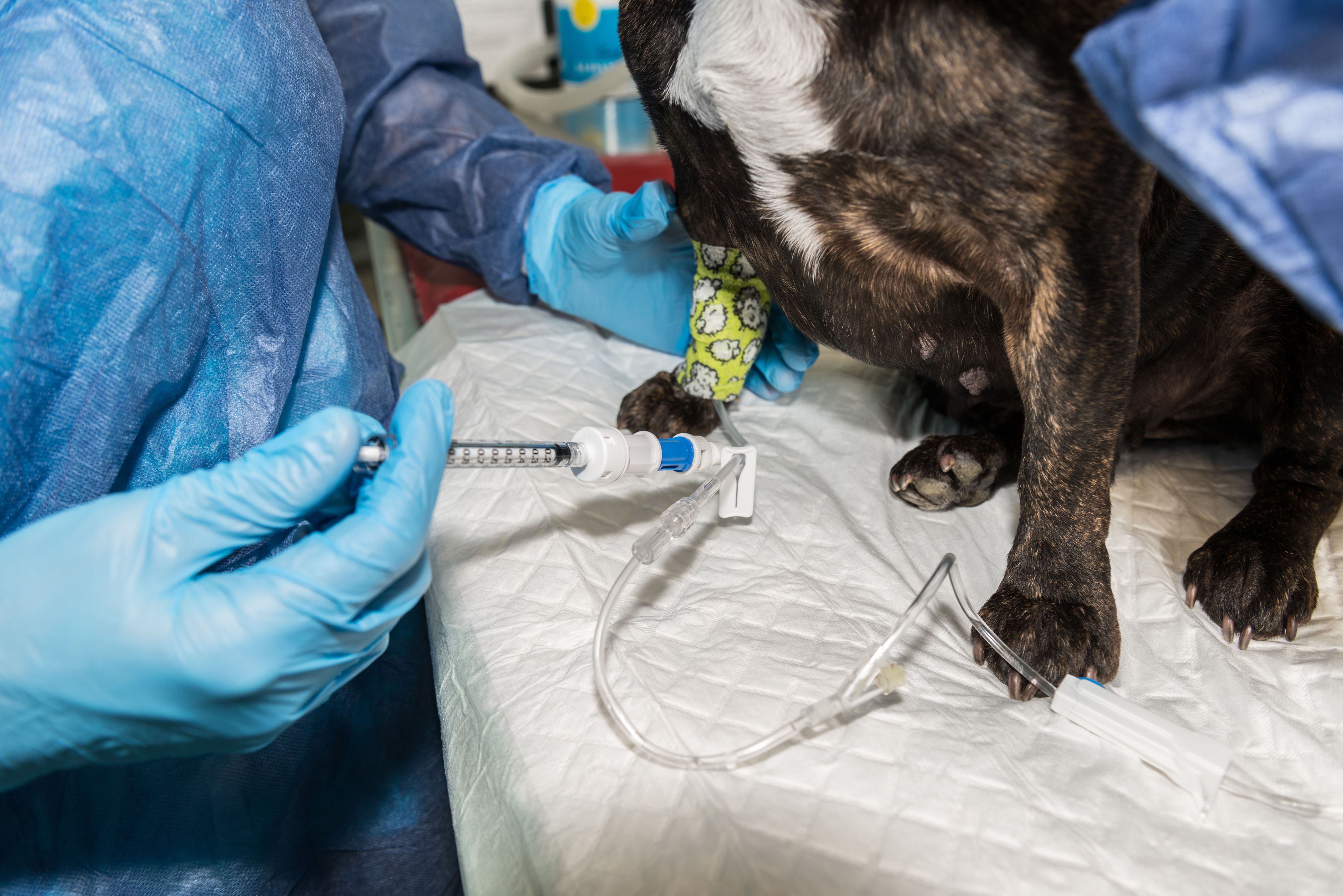Precision medicine: a new frontline attack on canine cancer
Exploring the differences between traditional chemotherapy and targeted therapy
antoine-photographe / stock.adobe.com

In mid-2019, Lulu, a 12-year-old Akita Inu presented to my oncology practice with a diagnosis of thyroid carcinoma. Despite surgery and chemotherapy, Lulu’s cancer metastasized. Close to 3 years later, through the use of targeted therapy (i.e., precision or personalized medicine), Lulu continues to thrive with no evidence of current cancer spread.1
Precision medicine is defined in the Oxford English Dictionary as “medical care designed to optimize... therapeutic benefit for particular groups of patients, especially by using genetic or molecular profiling.” You likely have exploited this for your patients with atopic dermatitis through the use of Apoquel, which targets the JAK enzyme, involved in signaling pathways dysregulated in allergy.
For cancer patients, precision medicine uses genomic Information extracted from a patient’s tumor to help confirm a diagnosis, formulate a treatment plan, evaluate its efficacy, and potentially provide prognostic information.
For human cancer patients, precision medicine has been employed for many years. More than 200 targeted therapies have FDA approval, with more in the pipeline. In veterinary medicine we are way behind with only 2 drugs (Palladia and Apoquel) to target disease in dogs.
Sequencing canine cancer tumors to apply precision medicine
Now that both the human and canine genome have been decoded, we can sequence a tumor’s DNA to look for mutations that may be driving that specific patient’s cancer. Beyond c-kit and mast cell tumors, other canine cancers have been studied in hopes of determining their driving mutations.
A study by Lorch et al in 2019 identified recurrent HER2 mutations in primary pulmonary adenocarcinoma in dogs.2 There have been several studies showing that a BRAF mutation is common in urothelial carcinoma in both people and dogs. There is even a urine test now available for dogs that can identify the presence of a BRAF mutation and therefore aid in the diagnosis of this tumor.
Differences between targeted therapy and traditional chemotherapy
Targeted therapy, while still a form of chemotherapy, differs from traditional chemotherapy in several ways.
Side effects
Traditional chemotherapy attacks and kills cancer cells due to their rapid growth, but it also kills rapidly dividing cells throughout the body, especially those lining the intestines, bone marrow cells, and hair follicles. This is why gastrointestinal side effects (nausea, decreased appetite), immunosuppression, and hair loss are the more common side effects in people and dogs undergoing traditional chemotherapy.
In comparison, targeted therapy attacks cancer cells based on a certain characteristic like a genetic mutation. Palladia for instance, is used to target malignant mast cells based on the presence of the c-kit mutation. Because mutations and other malignant genetic changes are often unique to cancer cells, we expect only those cells to get targeted and not the fast-growing cells in the intestinal tract and immune system allowing us to fight cancer with a lower risk of side effects.
Management of side effects
Targeted therapies are commonly metabolized by the liver and then excreted through the digestive system (feces). This metabolism is often rapid due to the short half-life of targeted therapies. Management of side effects is therefore straightforward and involves reduction in dosage, frequency, or drug holiday.
Administration of targeted therapy
Targeted therapy drugs are oral medications that can safely be administered at home by pet parents, as long as certain precautions are taken, like wearing gloves when handling the pills. Due to their targeted nature, they are safe enough to be given in conjunction with most other medications and supplements these dogs may already be receiving. Their excretion is minimal and often in the feces, so there is minimal risk of exposure to people and other housemates.
The future
In both human and veterinary oncology, we continue to learn more and more about targeted therapy and their use in the treatment of cancer. Optimistically, we will be able to prolong patient survival while allowing patients to continue enjoying a good quality of life. In time, we hope to extend their use to other species, like cats and zoological species.
References
- Thyroid carcinoma case study: Lulu. FidoCure. August 13, 2022. Accessed April 20, 2022. https://www.fidocure.com/veterinary-oncology/case-studies/thyroid-carcinoma-case-study-lulu/
- Lorch G, Sivaprakasam K, Zismann V, et al. Identification of Recurrent Activating HER2 Mutations in Primary Canine Pulmonary Adenocarcinoma. Clin Cancer Res. 2019;25(19):5866-5877. doi:10.1158/1078-0432.CCR-19-1145v